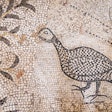
Quietly (maybe not so much) and with tenacity, insects will be “invading” our lives. It sounds like an apocalyptic image of a planet being invaded by insects, but I do not mean that.
The International Platform for Insects for Food and Feed (IPIFF) has been working hard and just a few days ago “welcomed the European Union (EU) Member States authorities' green light to the draft implementing regulations from the European Commission, aiming to authorise the commercialisation of frozen and freeze-dried formulations of the lesser mealworm (Alphitobius diaperinus larva) and partially-defatted house cricket (Acheta domesticus).”
The authorization of these two insects for foods and feeds will be ready in a few weeks. While this does not mean they will be widely used right away, it is a very good start, though. With this, I am sure insect production will grow more and will lead to a greater availability of insect protein.
After I wrote my blog last week about the genetically modified corn ban in Mexico, I was thinking on how feed formulation might change if the ban does take effect on feeds. With not enough corn for feeds, how are feed formulators going to fill in the big gap?
Setting aside cost for a minute (thinking only about nutrition), I wondered about maybe using more sorghum? Would enzymes play an even more important role in improving feed efficiency? Will other raw materials such as rendered products, fats and even insect protein be included?
Establishing insect farms will not happen overnight, but given the circumstances, it wouldn’t be a bad idea, in addition to other measures. Insects have been part of the diet for centuries in countries like Mexico, so it might be a country in Latin America where this can happen.
What do you think?


















